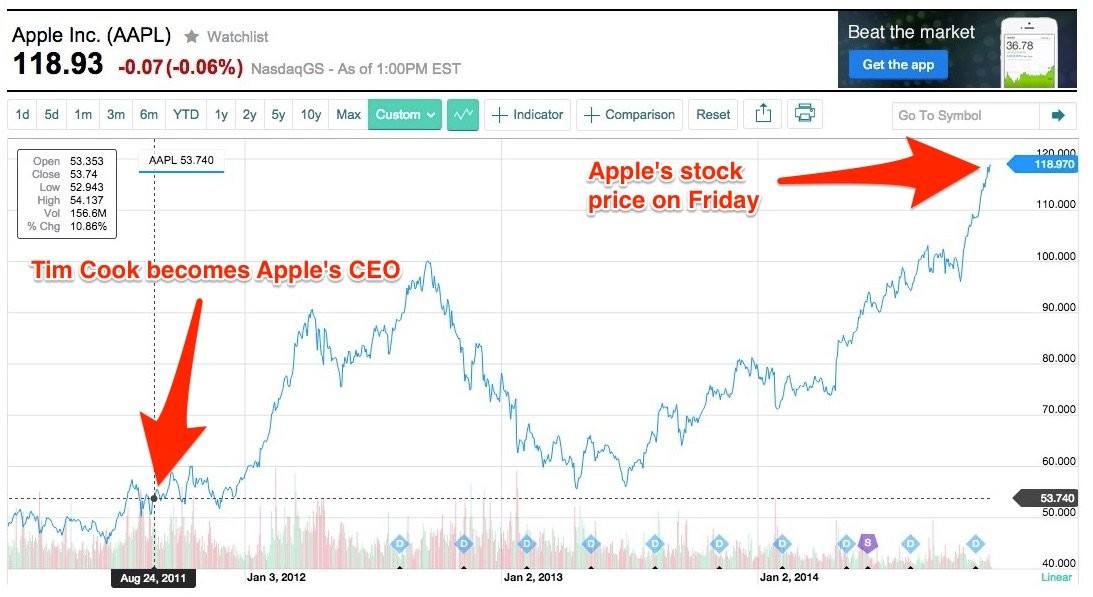10 Indicators To Watch For Stock Slide Business Insider
Post on: 30 Апрель, 2015 No Comment

Recent Posts
One year ago, we provided our list of the 10 indicators to watch that seemed to precede the stock market declines in 2010 and 2011 and accurately warned of another spring slide in 2012.
We again look to these indicators for signs of a potential spring slide in the stock market this year.
In early 2010, 2011, and 2012, run-ups in the stock market, similar to this year, pushed stocks up about 10% for the year as April began. Specifically, on April 23, 2010, April 29, 2011, and April 2, 2012, the S&P 500 made peaks that were followed by 10–19% losses that were not recouped for more than five months. This recurring phenomenon is often referred to by the old adage “sell in May and go away.” Now that it is around the time the prior slides have begun, it is time to revisit the status of our indicators.
Currently, only two of the 10 indicators are waving a red flag, while three are yellow for caution, and the other five are green. On balance the indicators do not point to a significant risk of a repeat of the 10–19% spring slides in the stock market this year. However, a smaller decline of about 5% or so is far from out of the question and remains our most likely scenario, as presented in recent Weekly Market Commentaries. We will continue to monitor these indicators closely in the coming weeks.
1. Fed stimulus – In 2010 and 2011, Federal Reserve (Fed) stimulus programs known as QE1 & QE2 came to an end in the spring or summer, and stocks began to slide until the next program was announced. Operation Twist was announced on September 12, 2011 and was scheduled to conclude at the end of June 2012, helping to prompt a market slide before it was extended at the end of June 2012. This year, the current program is unlikely to be slowed or stopped until much later this year. Therefore, this is unlikely to be a driver of a slide in stocks this spring.
2. Economic surprises – The Citigroup Economic Surprise Index [Figure 1] measures how economic data fares compared with economists’ expectations and has marked the spring peaks in both economic and market momentum in recent years. While the latest readings have not surged up near the 50-level that marked the peaks of recent years, the weakening trend does suggest expectations may have become too high. Turning points typically have coincided with a falling stock market relative to the safe haven of 10-year Treasuries.
LPL Financial
3. Consumer confidence – In the past few years, early in the year the daily tracking of consumer confidence measured by Rasmussen [Figure 2] rose to highs just before the stock market collapse as the financial crisis erupted. The peak in optimism gave way to a sell-off as buying faded. Investor net purchases of domestic equity mutual funds began to plunge and turned sharply negative in the following months. This measure of confidence is once again beginning to fall from the highs.
LPL Financial
4. Earnings revisions – The earnings estimates moved higher heading into the first quarter earnings season of each of the past few years, only to begin a decline that lasted the remainder of the year as guidance disappointed analysts and investors. This year, earnings expectations have not risen as much as in prior years, which may limit the disappointment. In addition, last week saw disappointing reports from bellwethers such as Oracle and FedEx. among others. It is too early to say whether this indicator is flashing a warning sign. We will be watching to see if estimates begin to taper off.
LPL Financial
5. Yield curve – In general, the greater the difference between the yield on the 2-year and the 10-year U.S. Treasury notes, the more growth the market is pricing into the economy. This yield spread, sometimes called the yield curve because of how steep or flat it looks when the yield for each maturity is plotted on a chart, peaked in February of 2010 and 2011, and March of 2012. Then the curve started to flatten, suggesting a gradually increasing concern about the economy, as the yield on the 10-year moved down. Although not as steep as in prior years, this year we will be watching to see if the yield curve flattens further after peaking in mid-March.
6. Energy prices – In 2010, 2011, and 2012, oil prices rose about $15–20 from around the start of February, two months before the stock market began to decline. This year, oil prices rose to $98 at the start of February and have eased slightly since then, suggesting less risk to consumers already struggling with higher taxes. However, the national average retail gasoline price has risen 50 cents this year, similar to the average rise from the beginning of the year through March over the past three years. With prices starting to ease along with crude oil the risk is fading, but a further surge in prices at the pump would make this indicator more worrisome.
7. The LPL Financial Current Conditions Index (CCI) – In 2010 and 2011, our index of 10 real-time economic and market conditions peaked around the 240–250 level in April and began to fall by over 50 points. It may still be early, but this year, the CCI recently reached 253—in line with the post-recession highs with no signs yet of weakening.
8. The VIX – In each of the past three years the VIX, an options-based measure of the forecast for volatility in the stock market, fell to the low of the year in the low-to-mid teens in April before ultimately spiking up over the summer. In recent weeks, the VIX has declined once again to the lows of the year. This suggests investors have again become complacent and risk being surprised by a negative event or data.
LPL Financial
9. Initial jobless claims – It was evident that first-time filings for unemployment benefits had halted their improvement by early April 2010, and beginning in early April 2011, they deteriorated sharply. In 2012, April again led to deterioration in initial jobless claims as they jumped by about 30,000. While claims have fallen to post-recession lows this year as the labor market has improved, we will again be watching for a move higher in April that would echo the spike seen in recent years. (See this week’s Weekly Economic Commentary for what the Fed is watching in the labor market.)

10. Inflation expectations – The University of Michigan consumer survey reflected a rise in inflation expectations in March or April of the past three years. In fact, in 2011, the one-year inflation outlook rose to 4.6% in both March and April from 3% at the start of the year. This year, there has been almost no rise in inflation expectations, as they remain about 3.3%.
Finally, one issue not addressed specifically in the indicators, but important in the markets, is the surge in European stresses—evident in the spring of each of the past few years. The weakening economic data in Europe’s core countries such as Germany and France (seen most recently in last week’s German manufacturing and sentiment data), combined with financial stresses in peripheral countries such as Cyprus pose a risk to global markets if too little is done to address the key issues. Europe continues to focus on capping banker bonuses and financial transactions taxes rather than core issues. This could risk a bond market sell-off that could negatively affect stocks here in the United States, similar to the spring slides in recent years.
While this list may seem incomplete, it is notable that many of the most widely watched indicators of economic activity such as manufacturing (the Institute for Supply Management Purchasing Managers’ Index known as the PMI or the ISM), job growth, and retail sales, among others, did not deteriorate ahead of the market decline, but along with it . It is not that they are not important; it is just that they did not serve as useful warnings of the slide to come, while the above indicators did.
Shorter Slide?
While it is possible we will experience another spring slide this year, there are factors that may mitigate any decline short of the 10–19% seen in the past few years.
Looking back, in 2010 the negative environment that helped fuel the decline included the uncertainty around the impact of the Dodd-Frank legislation, the Eurozone debt problems and bailouts, central bank rate hikes, and the end of the homebuyer tax credit. In 2011, it was the Japan earthquake and nuclear disaster that disrupted global supply chains and pulled Japan into a recession, the Arab Spring erupted pushing up oil prices, the budget debacle and related downgrade of U.S. Treasuries, rising inflation, and central bank rate hikes that contributed to the decline. In 2012, the Eurozone debt problems coming to a head, China’s slowdown, the European recession, the election uncertainty, and anticipation of the 2013 budget bombshell of tax hikes and spending cuts weighed on markets.
Some of these challenges presented in prior years are repeated again this year–potential for flare-ups over European problems and the debt ceiling come to mind. However, there are some positives this year that may help offset some of the negatives making for a potential decline that may be less steep than those of recent years. First, job growth finally appears to be reaccelerating with three of the past four months posting more than 200,000 in net job creation. Second, the housing rebound is now well-entrenched, supporting economic activity and household confidence. Finally, business spending growth appears to be reaccelerating and likely to support manufacturing activity, which had fallen in May through July of the past few years and contributed to the market decline.
Given this year’s nearly double-digit gain in the S&P 500 and the possibility of another spring slide for the stock market, investors may want to watch these indicators closely for signs of a pullback despite the current upward momentum in the stock market and solid economic growth.














